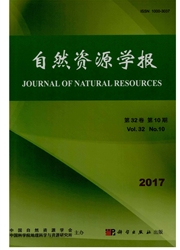

 中文摘要:
中文摘要:
世界文化遗产福建土楼地处中国东南沿海,年降雨高达1 600 mm,频繁遭受台风和极端天气袭击,每当台风登陆时,狂风挟着暴雨常常侵蚀危害着土楼建筑,风驱雨冲击侵蚀土楼夯土墙已成为土楼建筑的主要损坏形式。论文通过分析风驱雨作用下雨滴的运动形式及降雨特征,采用CFD数值模拟及风洞试验的方法完成数值风洞准确性模拟,以数值风场为基础加入降雨模型,考虑多种雨强和风速相互组合,分析风驱雨对土楼夯土墙的风雨侵蚀影响,揭示了夯土墙风雨侵蚀的内在规律。并通过当地一份气象统计资料作为算例,预测土楼年平均侵蚀损伤量在0.4~2.6 mm之间,所得结果为土楼的维护加固和开发利用提供了科学依据,也为其他生土建筑研究提供借鉴和参考。
 英文摘要:
英文摘要:
The World Heritage Fujian Earth Buildings are located in China's southeast coastal area where is frequently suffered from typhoon and severe weather,the annual amount of rainfall can be as much as 1600 mm.Whenever typhoon landed,the gustiness,gathering with the torrential rain,tends to erode and cause damages to these Earth Buildings,with that,the wind-driven rain's erosion of the rammed earth wall has become the main form causing such damages.The accurate simulation of numerical wind tunnel can be completed by the adoption of methods of CFD numerical simulation and wind tunnel test,according to the analysis of the raindrops' motion form and the rainfall characteristics under the effect of the wind-driven rain.Considering the various combinative conditions of the rain strength and wind speed based on the numerical wind field and rainfall model,followed by analyzing the erosion damage of the rammed earth wall caused by the weather beaten,in such way,whose inherent regularity can be revealed.The last step is to predict the annual range of average erosion damage which is from 0.4 mm to 2.6 mm by the calculation example based on the local meteorological statistical data.The result will provide the earth buildings' maintenance reinforcement and exploitation with scientific basis,and provide the other rammed earth architecture with reference as well.
 同期刊论文项目
同期刊论文项目
 同项目期刊论文
同项目期刊论文
 期刊信息
期刊信息
